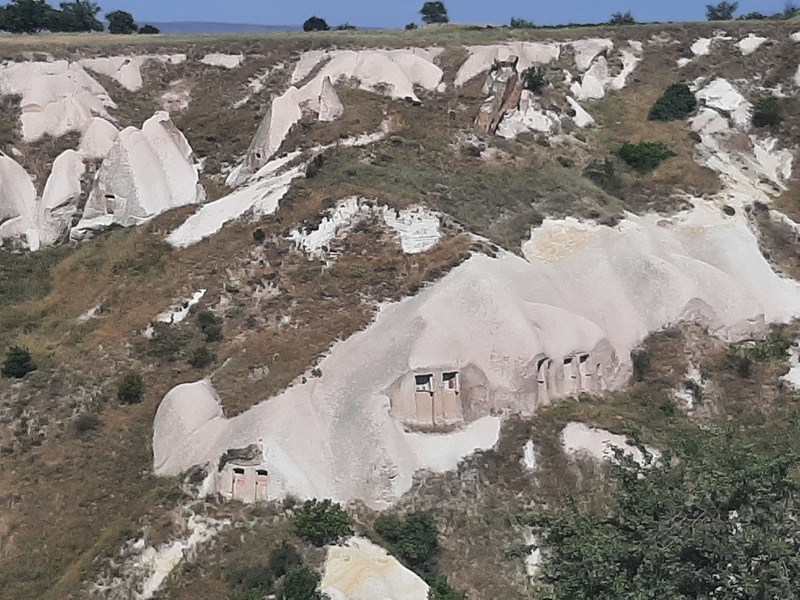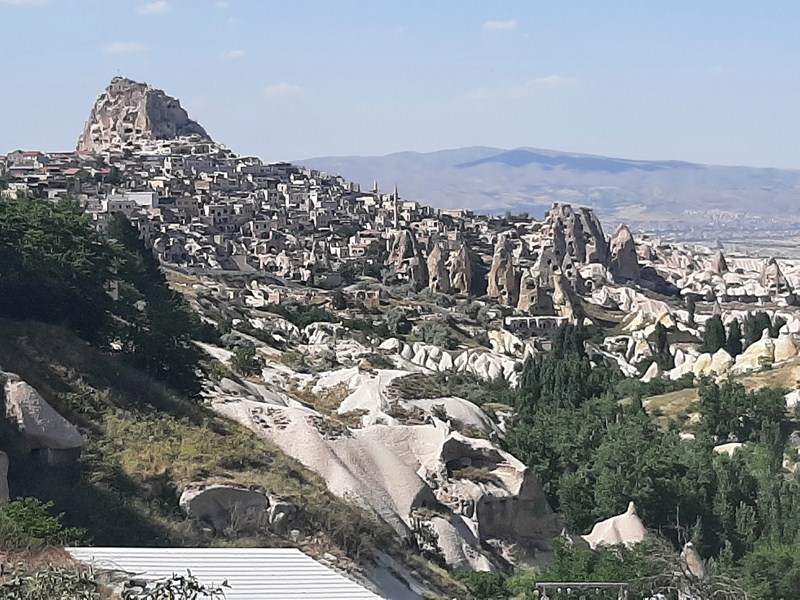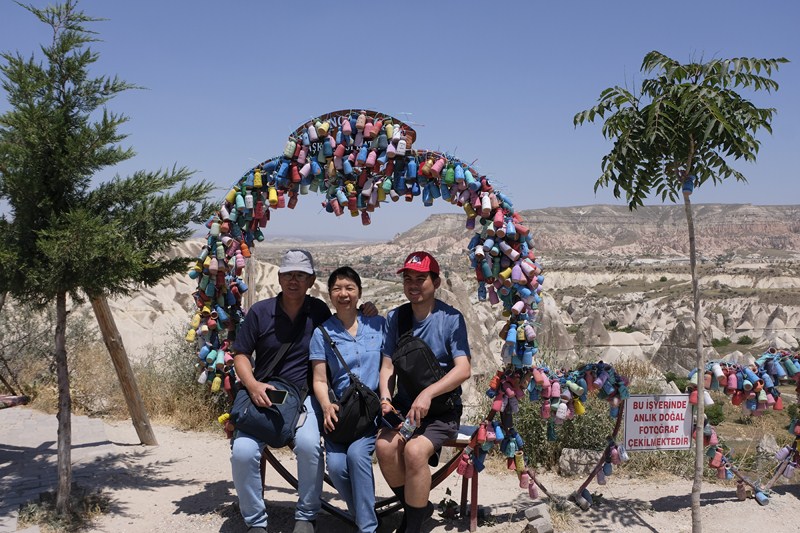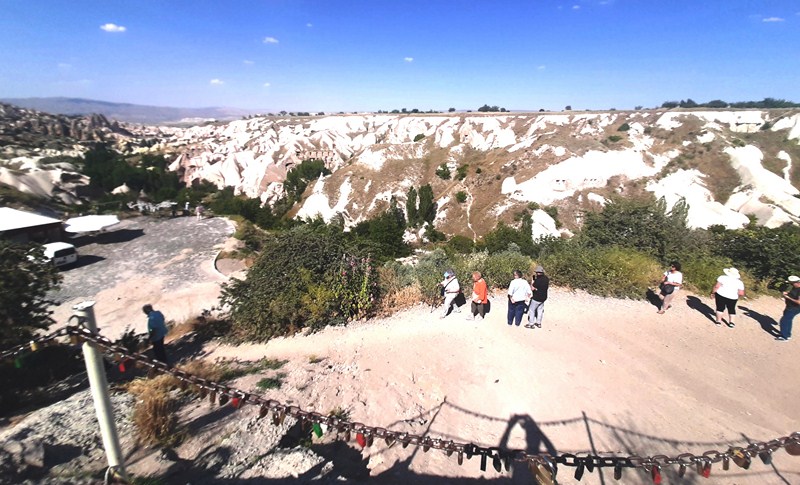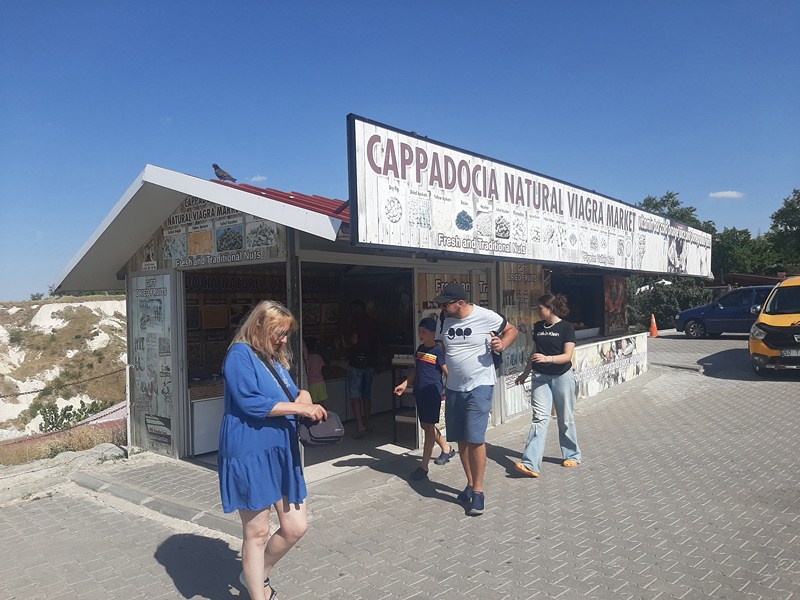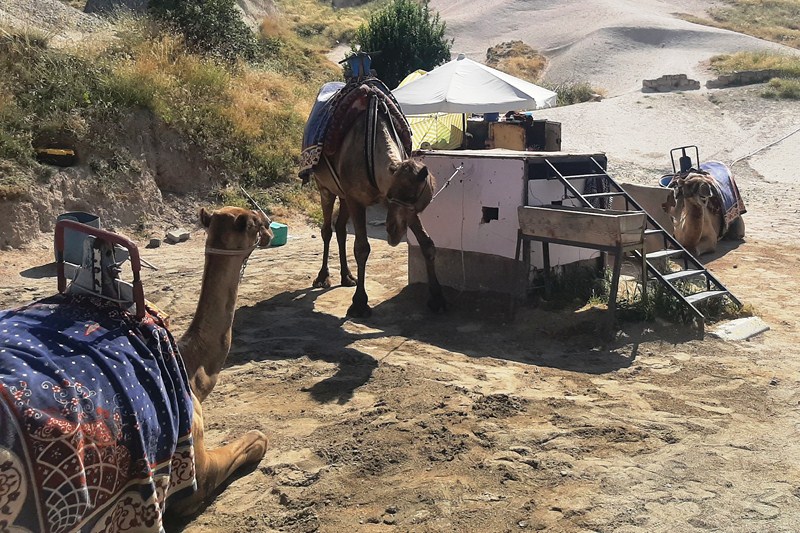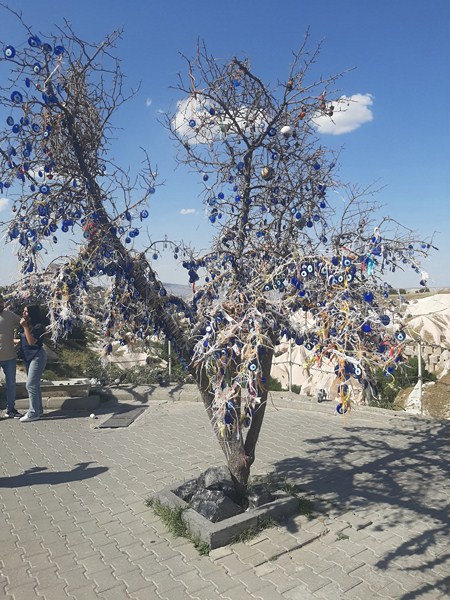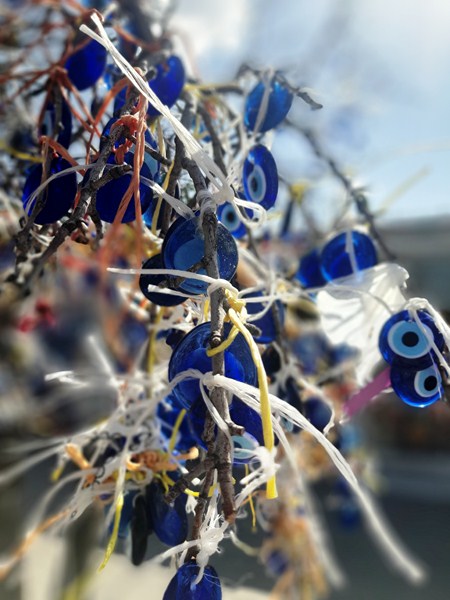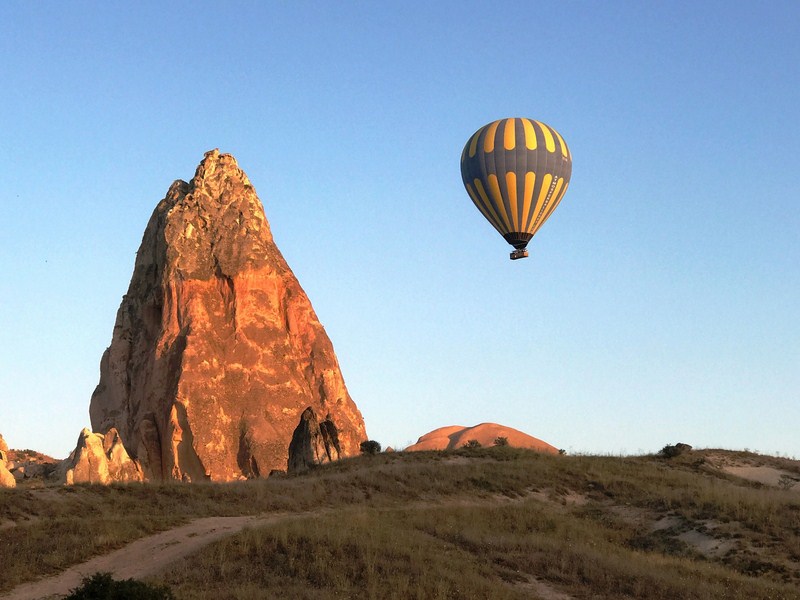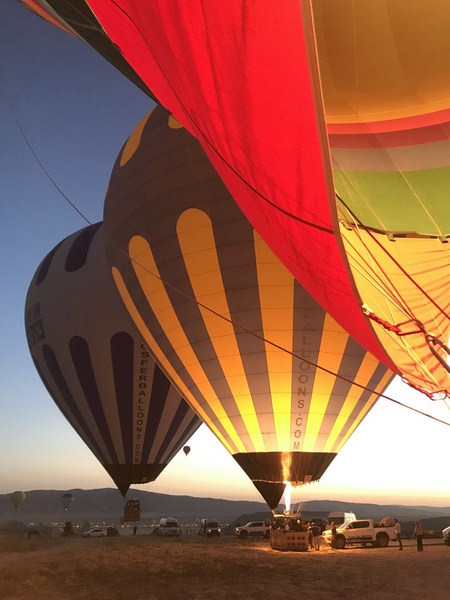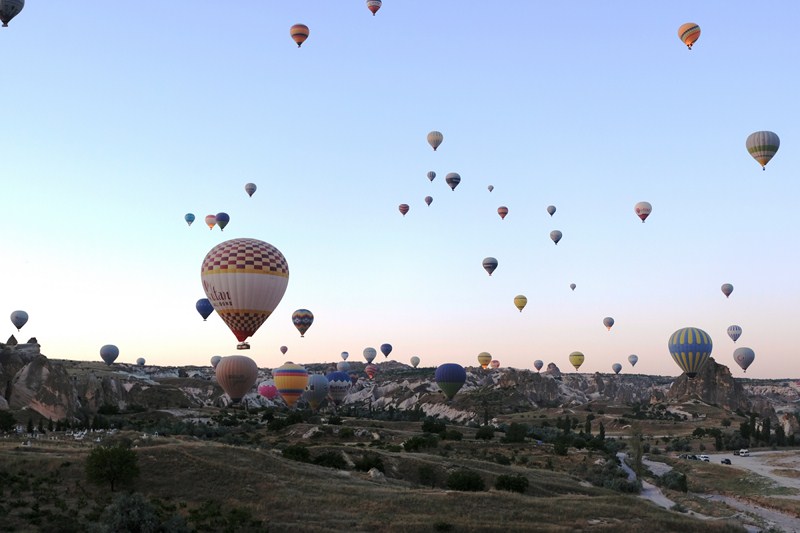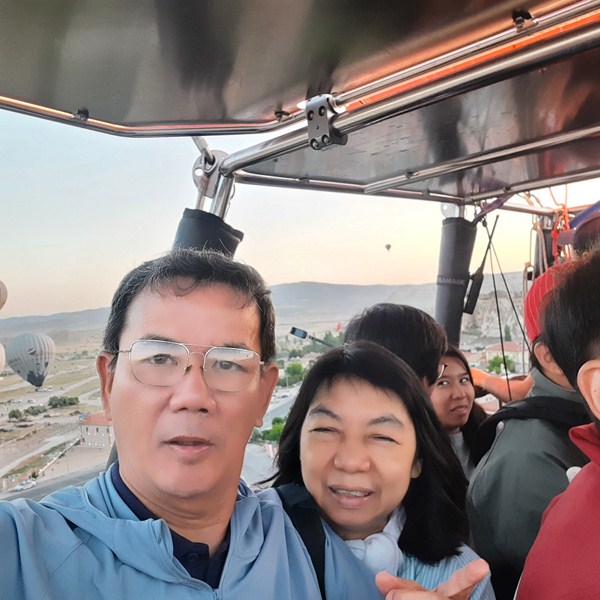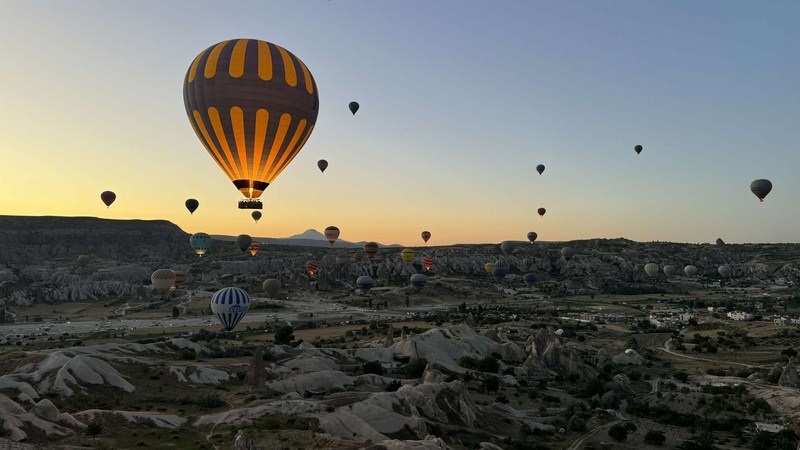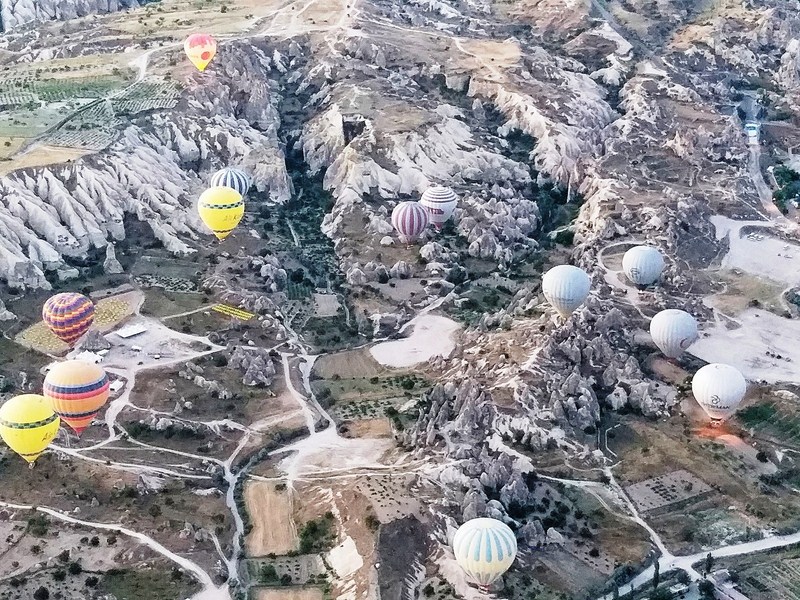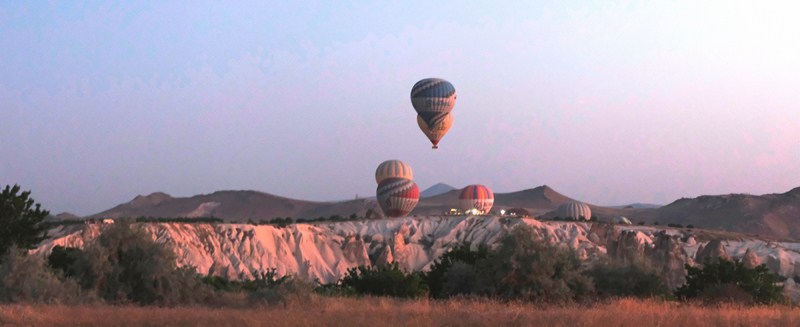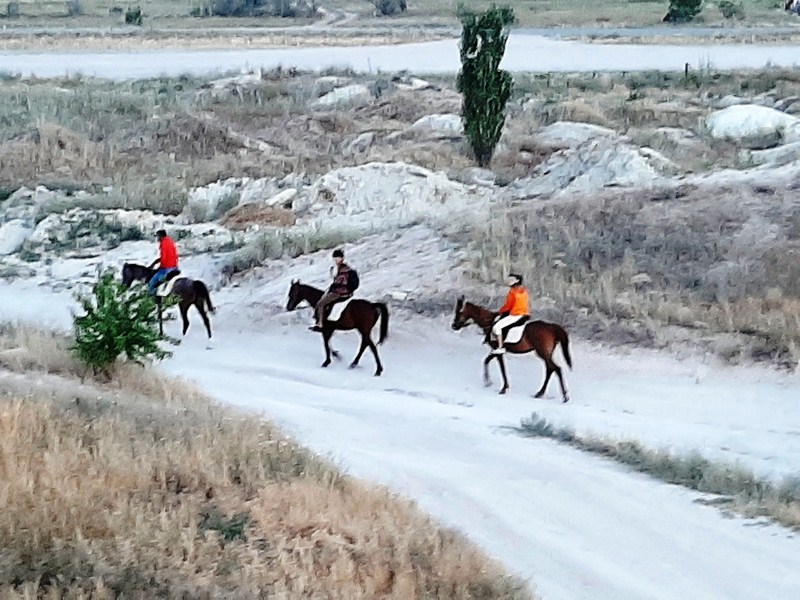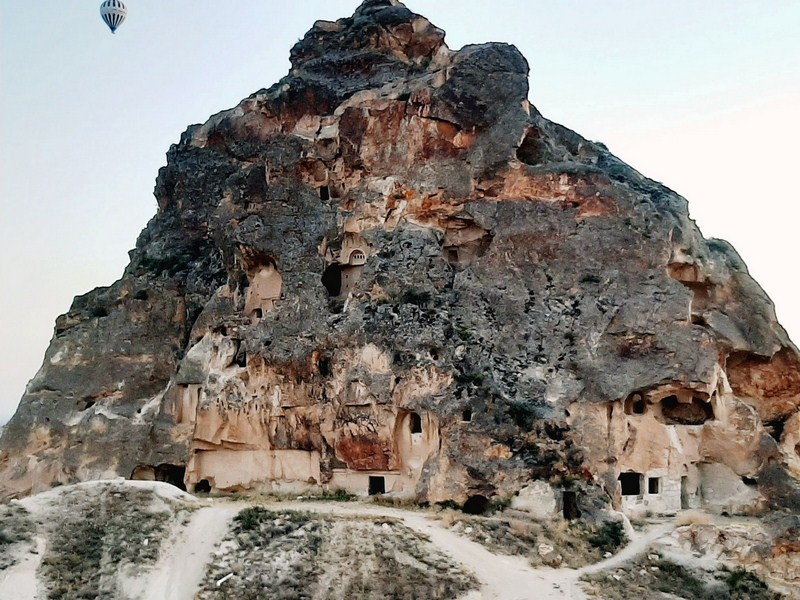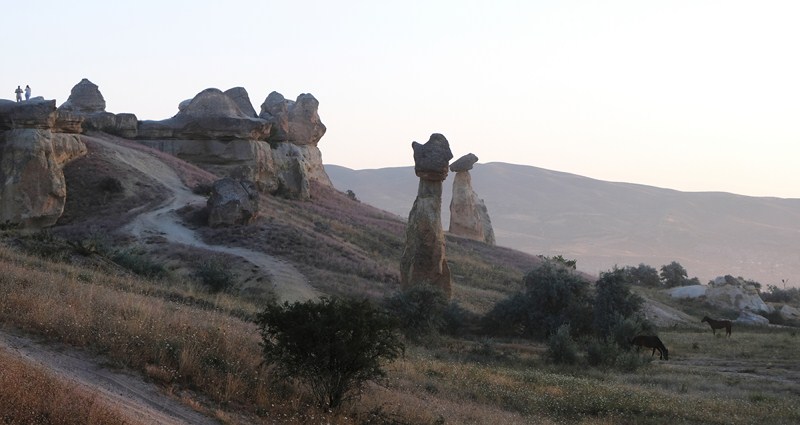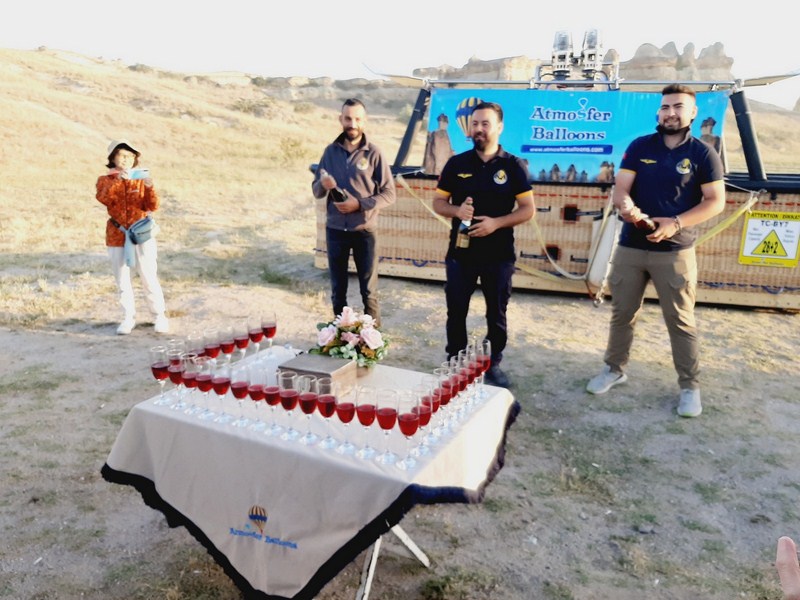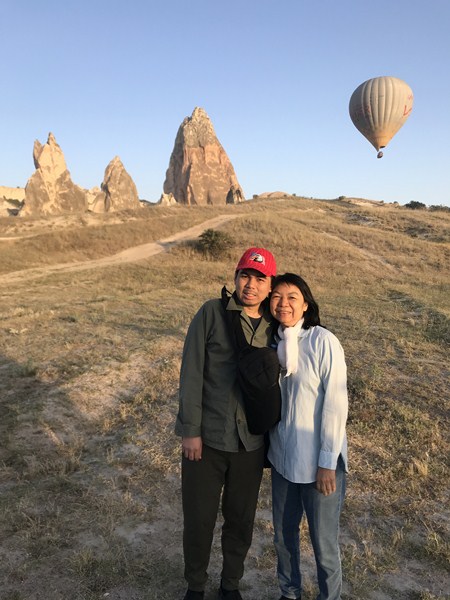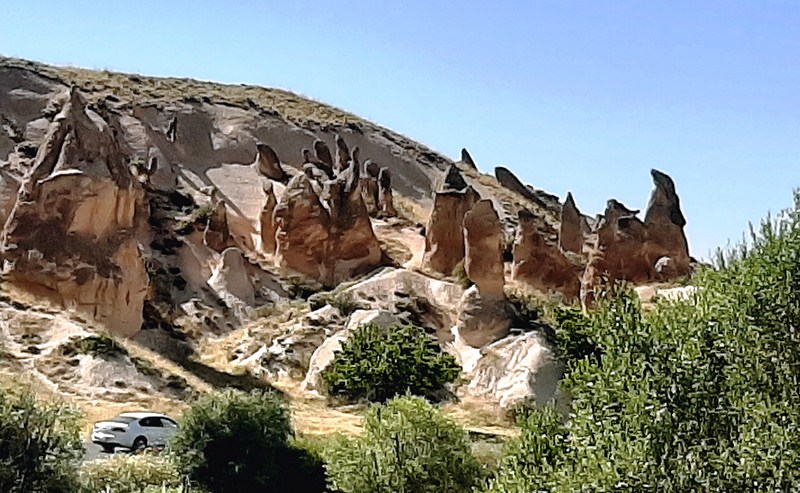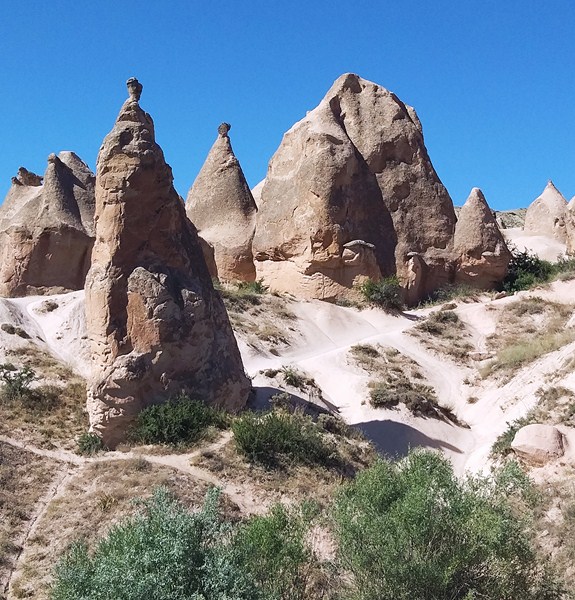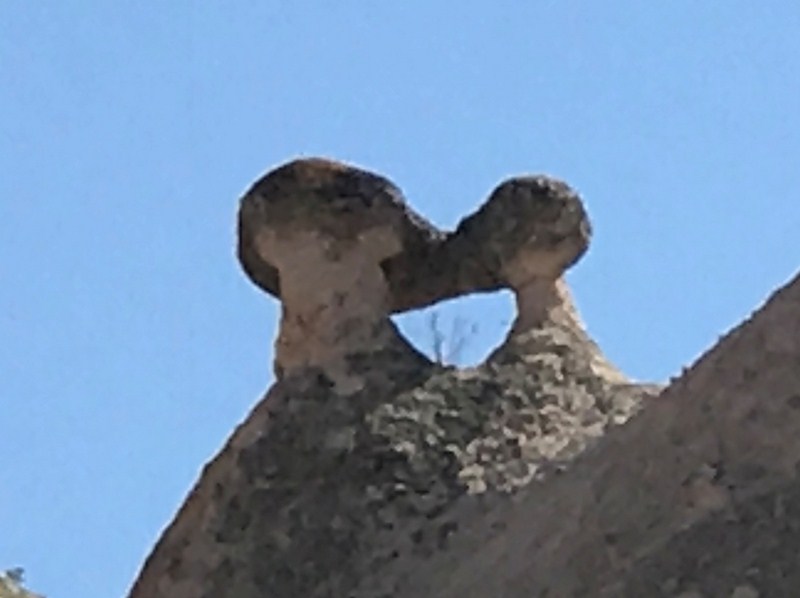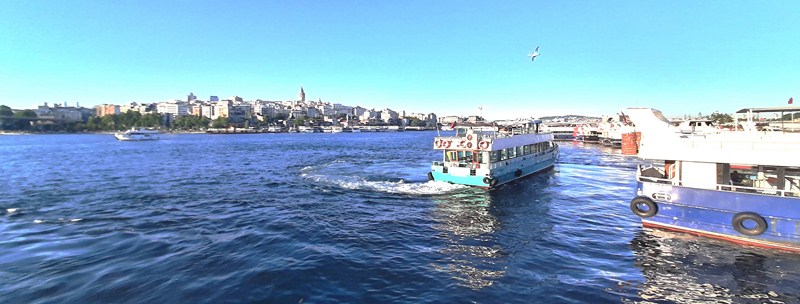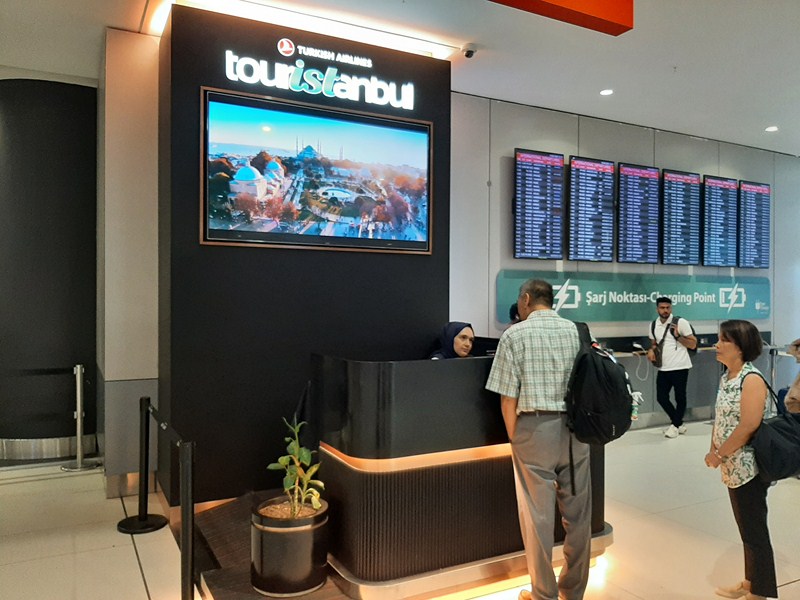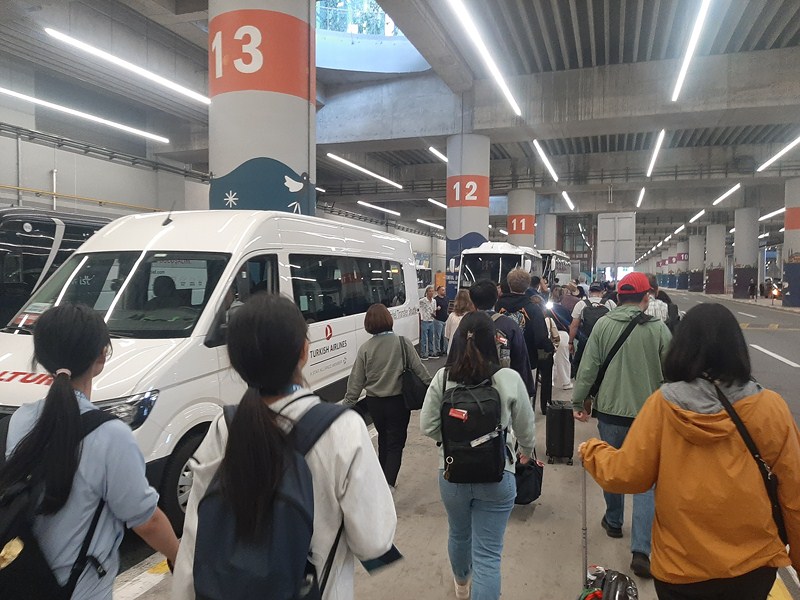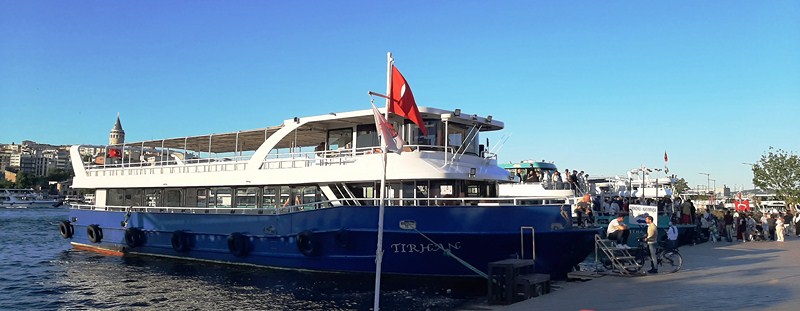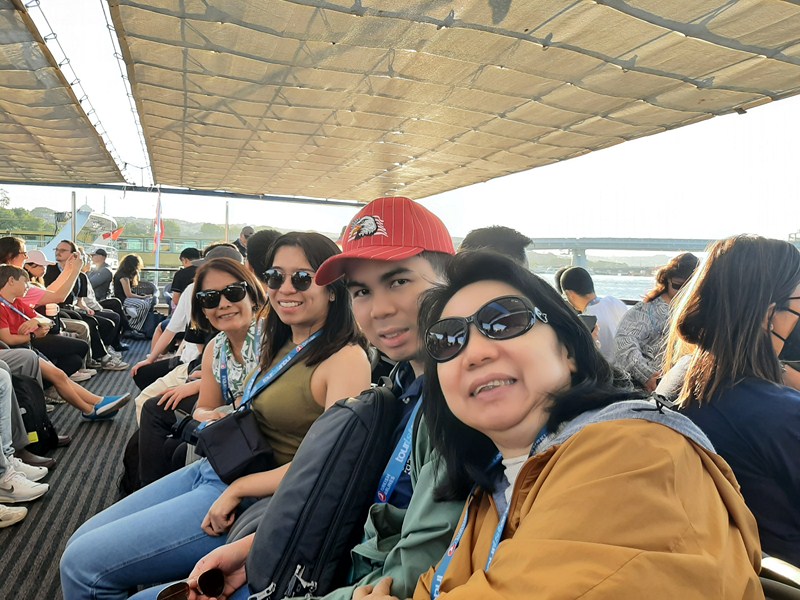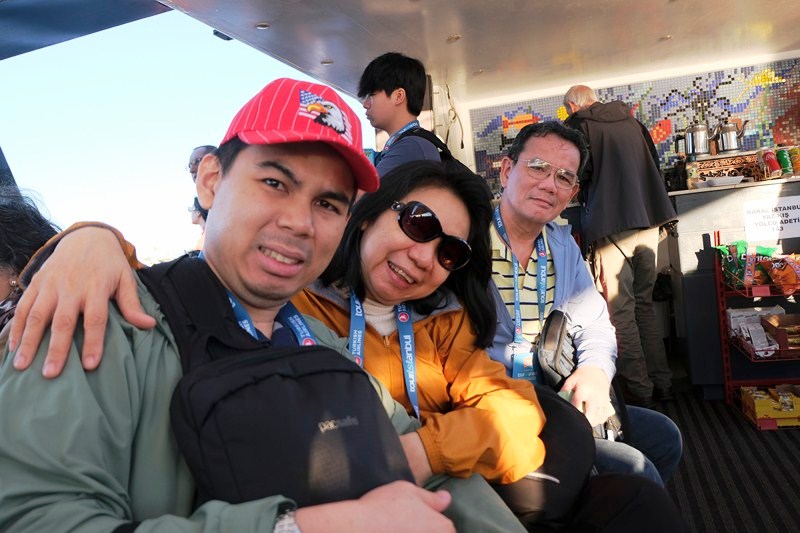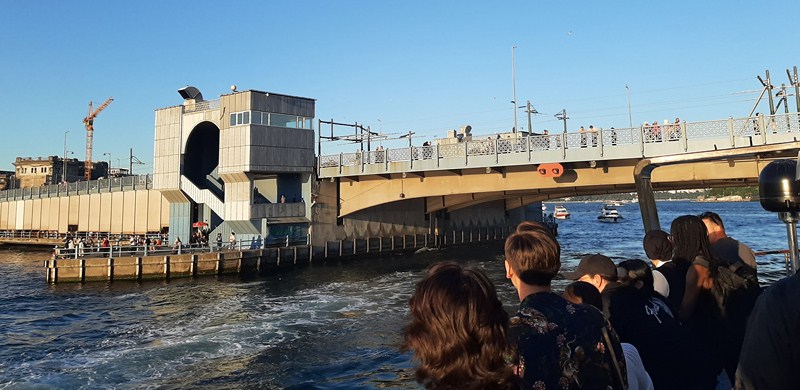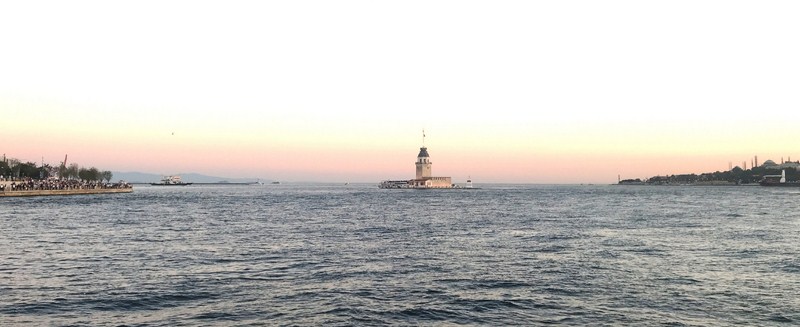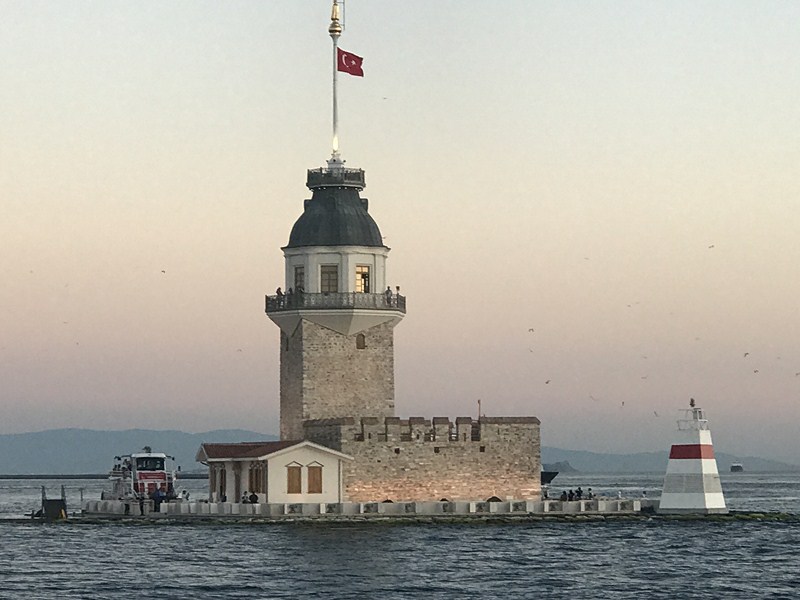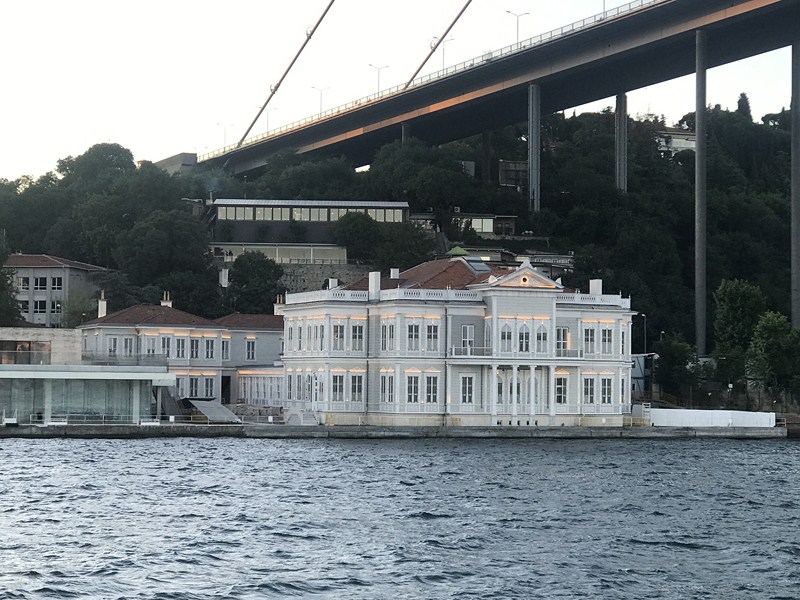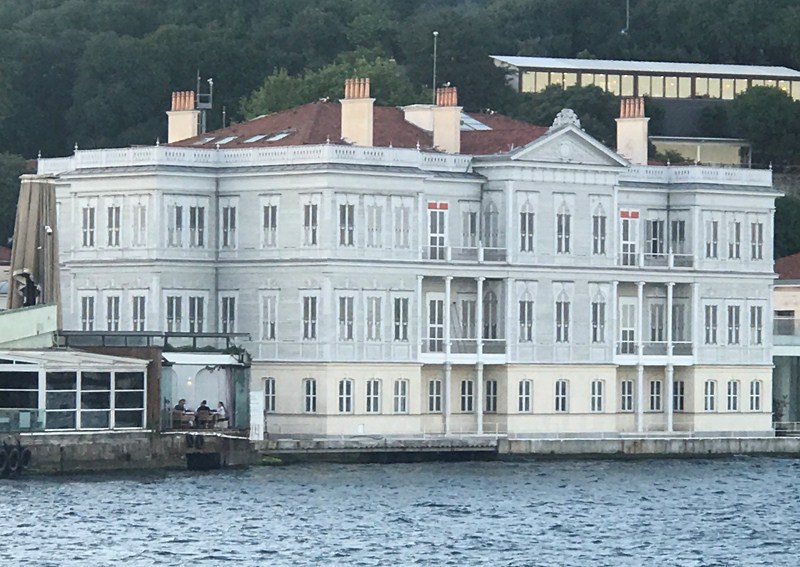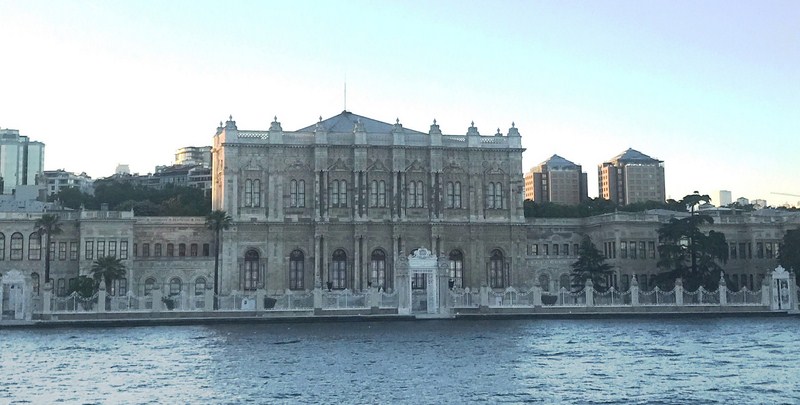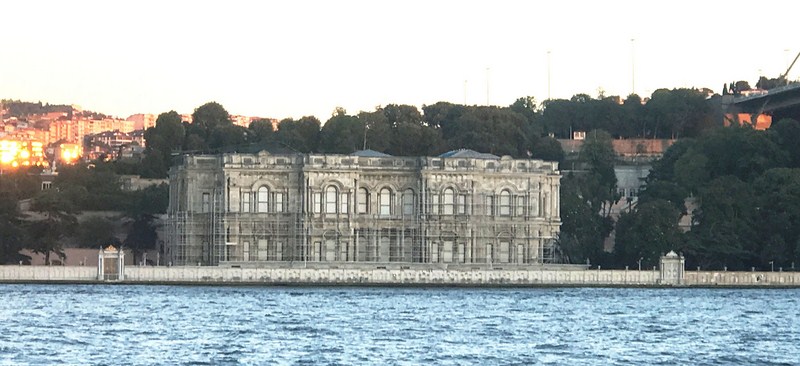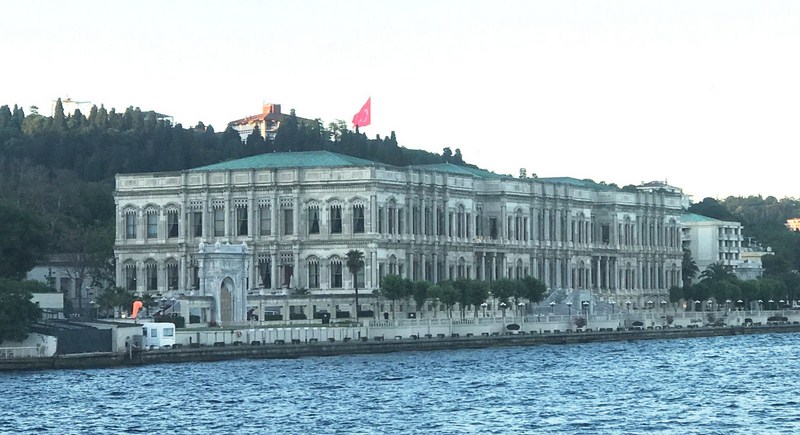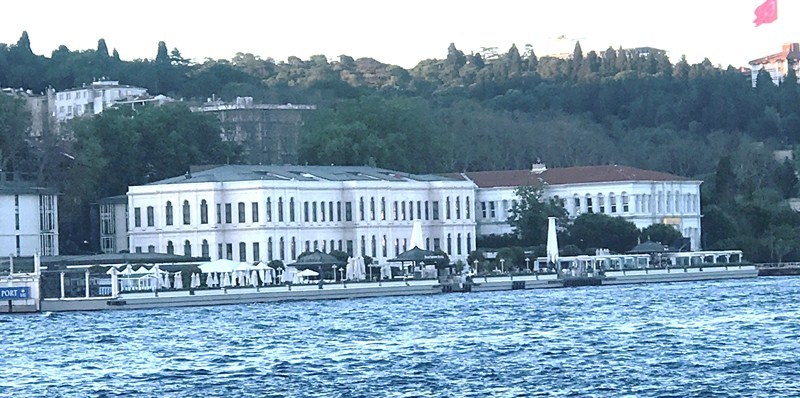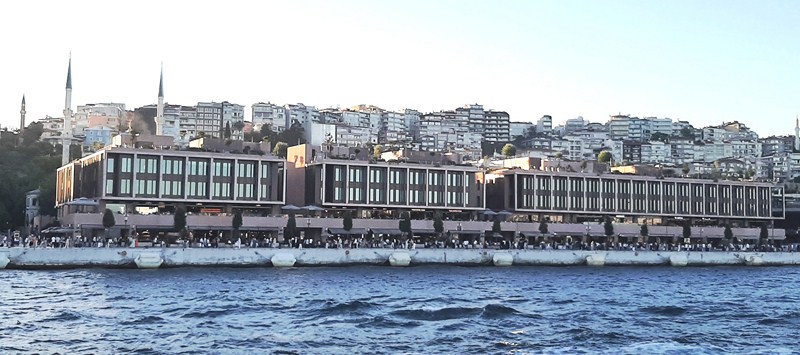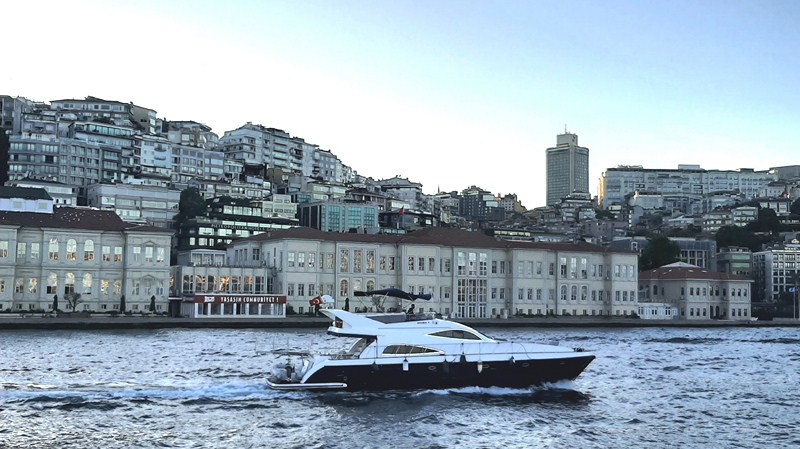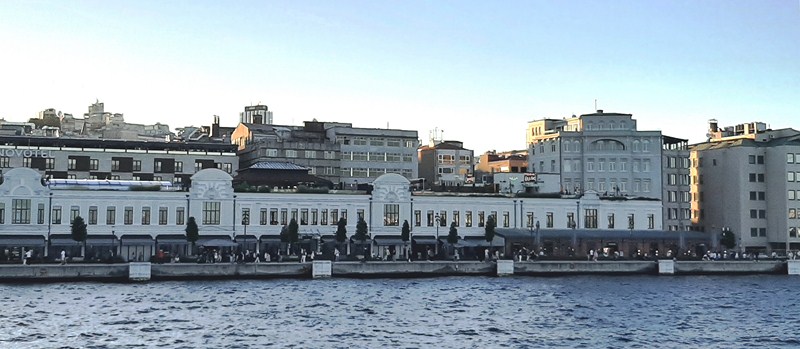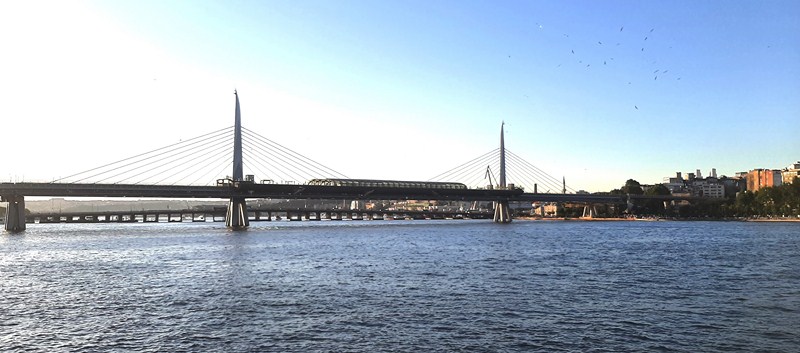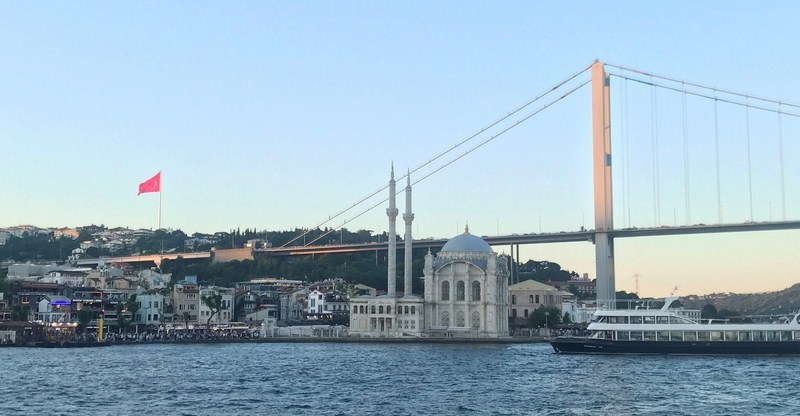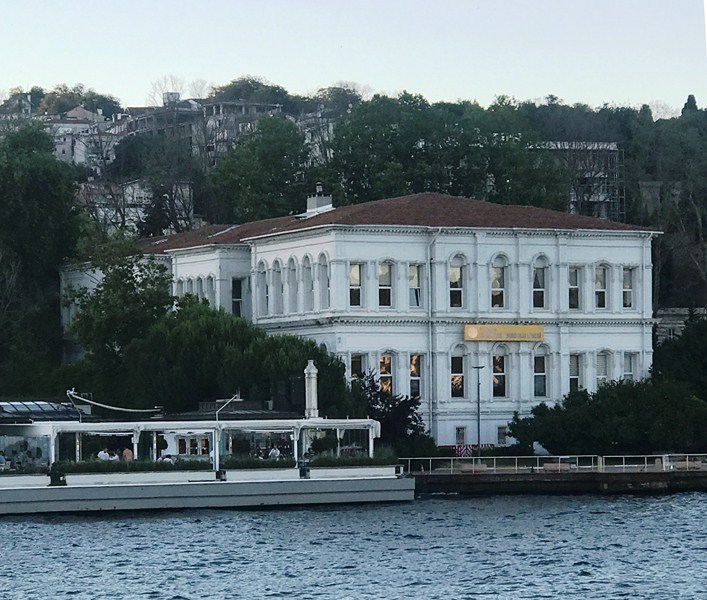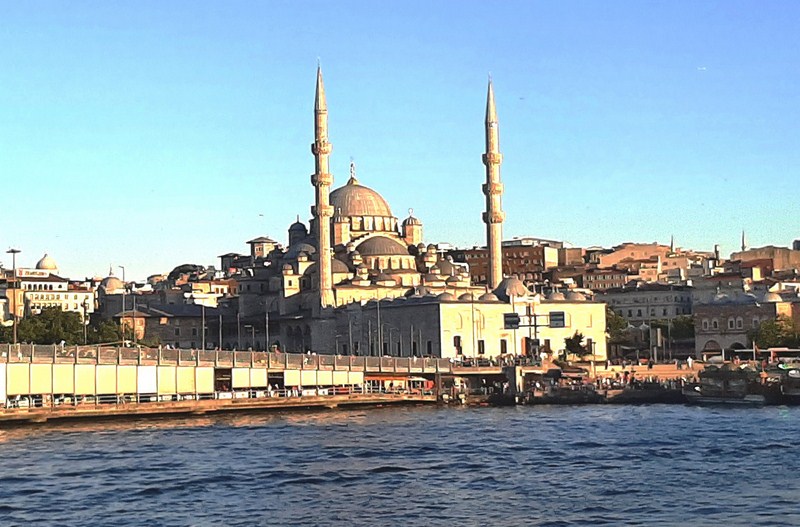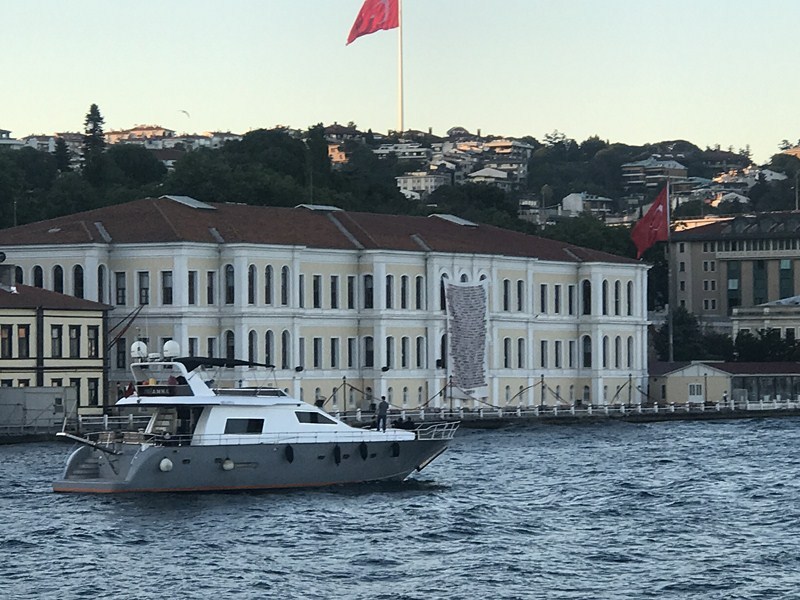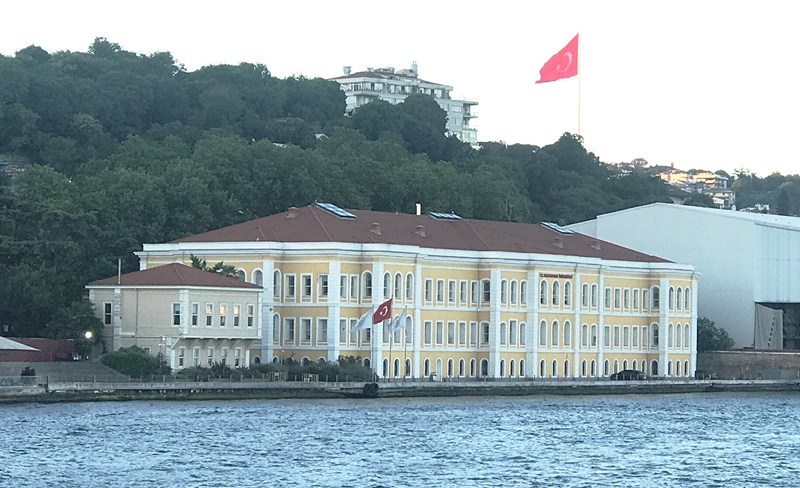Prior to returning to our hotel, we made a short stopover at the Pigeon Valley (Güverçinlik Vadisi) Viewpoint. The valley, running between Uçhisar and neighboring Göreme (a walk of around two hours), has many pigeon-houses which were carved, over the course of the years, into the soft tuff rock on the sides of the fairy chimneys.
Inside were many niches where pigeons could roost. Nutrient-rich pigeon guano was widely used as a natural fertilizer into the 1970s. Pigeon droppings were also used to enhance the colors of the frescoes in the cave churches.
You can also see the otherworldly scenery of Uchisar Castle (Uçhisar Kalesi) perched on top of a rocky pinnacle. One of the most prominent landmarks in Cappadocia, this ancient fortress, regarded as the tallest fairy chimney in the area.
This 60 m. ( 200 ft.) high turret of golden volcanic rock was sculpted by the elements and, later, by humans, the earliest of whom are believed to be the Hittites from the second millennium BC., followed by Byzantine settlers in the 4th century AD. It boasts stunning, unparalleled and panoramic view of Uchisar village and nearby hamlets.
The viewpoint is home to cafes selling tea, coffee and light snacks as well as a few shops selling overpriced souvenirs and local craft. Across the street, you can take pictures or ride, for a fee, with camels. Near the edge is a touristy love picture site for photo ops.
You can also feed the pigeons and sparrows with grain that can be bought at stores (1TL per cup). Also nearby is a hiking trail and the Cappadocia Natural Viagra Market, a store selling natural and organic Viagra, herbs, spices and different kinds of nuts (almonds, etc.) and dried apricots.
Within the area is an evil eye tree dripping with Turkish nazar boncugu (which literally means “evil eye bead”) amulets which look like small shiny fruit or glinting glass eyes. These lovely, inky blue talismans have deep cultural symbolism in Turkey and Greece.
Symbolizing the jealous and envious looks of others, these eye-shaped amulets are fixed to anything perceived to attract greed, envy or ill will, to ward off evil. People who buy these (1TL each) can hang it up the tree in the direction opposite to that of the person.
Pigeon Valley Viewpoint: Aşağı, Adnan Menderes Cd., 50240 Uçhisar/Nevşehir Merkez/Nevşehir, Türkiye.


